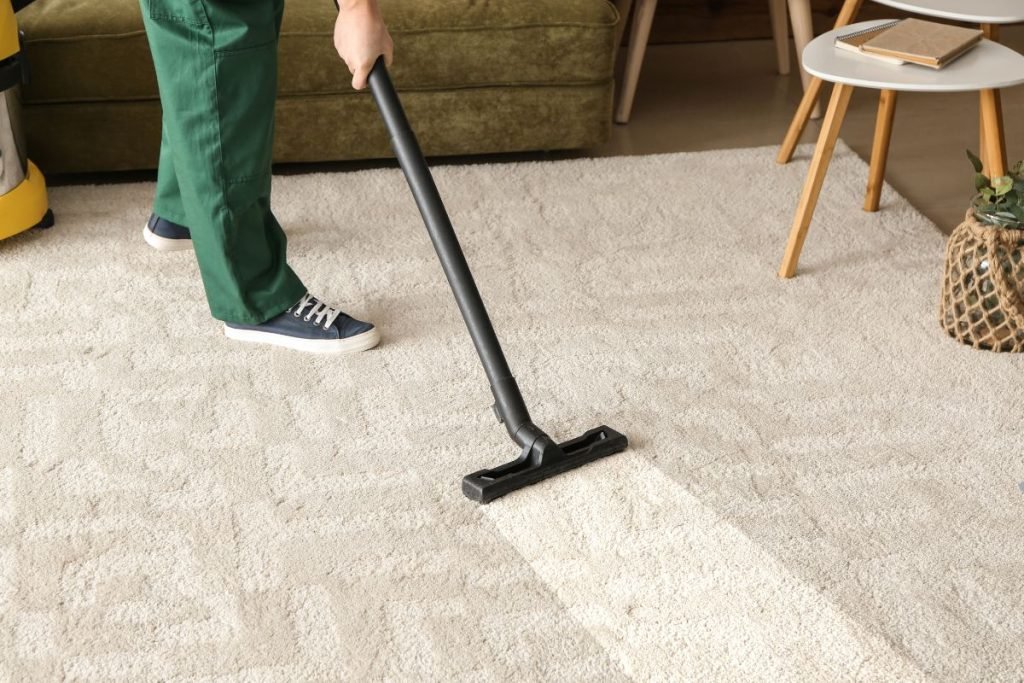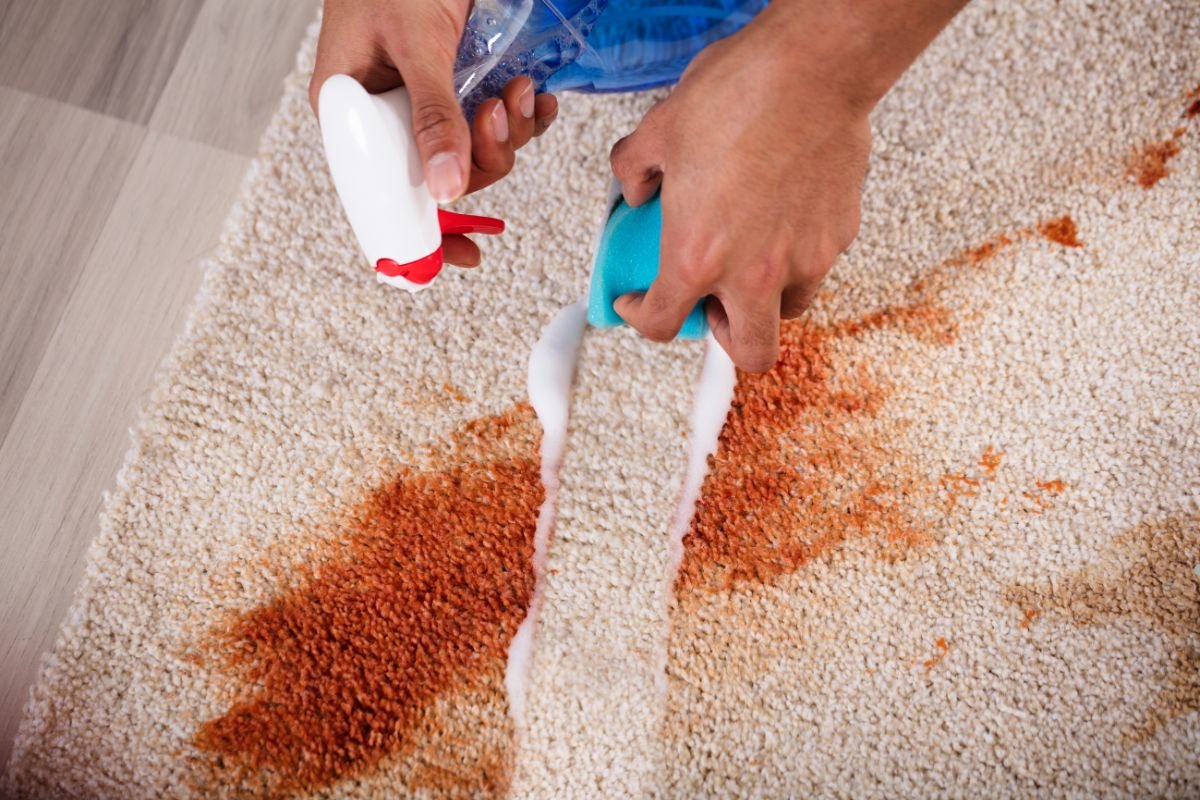
Is Carpet the Right Choice for Your Floors?
Choosing the right flooring is a major decision for any US homeowner. Carpet remains a popular choice, offering distinct advantages like comfort, warmth, and style versatility. However, it also comes with potential drawbacks, including maintenance needs, susceptibility to stains, and potential allergy concerns. Understanding both sides – the benefits like noise reduction and safety, and the challenges like cleaning and lifespan – is crucial before you commit. This guide provides a balanced look at the pros and cons to help you determine if carpet fits your lifestyle and home.
The Advantages: Why Choose Carpet?
Carpet offers a unique set of benefits that continue to make it a favored flooring option in many American households. From tangible comfort to aesthetic appeal, let’s delve into why many people opt for carpeting.
Explore our services to find the best carpet cleaning and maintenance solutions for your home!
Comfort and Warmth Underfoot
One of the most significant advantages of carpet is the sheer comfort it provides. Walking barefoot on a plush, soft carpet feels luxurious and cozy, especially on cold mornings or during winter months. Unlike hard surfaces like tile or wood, carpet provides a welcoming, warm cushion underfoot, making rooms like bedrooms and living areas feel instantly more inviting. This tactile comfort is hard to replicate with other.
Give your carpets a fresh, deep clean! Remove stains, dust, and allergens for a healthier home. Professional, reliable service at great rates. Call us now to book your appointment!
Improved Insulation and Energy Savings

Carpet fibers act as natural insulators. They trap air, creating a thermal barrier that helps keep warm air in during the winter and cool air in during the summer. This added insulation (measured by an R-value, which is higher for carpet than most hard floors) can contribute and maintaining a more consistent indoor temperature, potentially leading to energy savings over time.
Noise Reduction Qualities
Tired of echoing footsteps or loud noises traveling through your home? Carpet is excellent at absorbing sound. It significantly dampens impact noise (like footsteps) and airborne noise (like voices or television sounds), creating a quieter, more peaceful environment. This is especially beneficial in apartments, multi-story homes, or rooms like home theaters and children’s play areas where controlling noise levels is important. Carpet makes for much compared to hard surfaces.
Wide Variety of Styles, Colors, and Textures
The design possibilities with carpet are nearly endless. It comes in a vast array of colors, patterns, textures (like plush, Berber, frieze, loop), and fibers (nylon, polyester, wool, etc.). This versatility allows homeowners to perfectly match their carpet to any interior decor style, from traditional to modern minimalist. Whether you want a bold statement piece or a neutral backdrop, there’s a to suit your taste and enhance your home’s aesthetics.
Safety Features (Softer Landings)
Safety is a key concern, especially in homes with young children or elderly residents. Carpet provides a naturally slip-resistant surface, reducing the risk of falls. Furthermore, if a fall does occur, the cushioned surface provides a much softer landing compared to hard floors like tile or concrete, potentially minimizing injuries.
Thinking about installing carpet in your home? Discover the pros and cons in our ultimate guide. Need expert advice? Call us now to find the perfect flooring solution for your space!
Cost-Effectiveness (Sometimes)
While high-end carpets can be expensive, many carpet options offer a lower upfront cost for both the material and installation compared to some popular hard surface flooring like hardwood or high-quality tile. For budget-conscious homeowners looking to cover a large area. However, it’s essential to factor in long-term costs like professional cleaning and potential replacement.
The Disadvantages: Potential Downsides of Carpet
Despite its many benefits, carpet isn’t without its drawbacks. Potential issues range from cleaning difficulties to health concerns, and understanding these cons is vital for making an informed flooring decision.
Maintenance and Cleaning Challenges

Carpets require regular maintenance to look their best and remain hygienic. This includes frequent vacuuming (often multiple times a week in high-traffic areas) to remove surface dirt and debris. Spills need immediate attention to prevent staining. Furthermore, periodic (steam cleaning or shampooing) is typically recommended every 12-18 months to remove embedded dirt, oils, and allergens, adding to the overall maintenance effort and cost.
Potential for Stains and Odors
Carpet fibers, especially natural ones or those without stain protection, can easily absorb spills. Liquids like wine, coffee, juice, or pet accidents can quickly seep in, leading to difficult-to-remove stains. Over time, spills, pet odors, smoke, or even cooking smells can become trapped within the carpet fibers and padding, leading to persistent, unpleasant odors that require techniques.
Allergen and Dust Mite Concerns
One of the most significant concerns, particularly for allergy and asthma sufferers, is carpet’s tendency to trap airborne allergens. Dust, pollen, pet dander, mold spores, and other particulates can settle deep within the fibers. Carpets can also provide an ideal environment for dust mites.
Shorter Lifespan Compared to Hard Surfaces
Compared to durable options like hardwood, tile, or quality laminate flooring, carpet generally has a shorter lifespan. Depending on the quality of the carpet, the amount of foot traffic it receives, and how well it’s maintained, most carpets need replacement every 5 to 15 years. High-traffic areas may show wear patterns, crushing, or matting sooner, impacting the floor’s appearance and necessitating.
Susceptibility to Moisture Damage
Carpet and moisture don’t mix well. Excessive moisture from spills, leaks, high humidity, or improper cleaning can lead to serious problems. Wet carpet and padding provide a breeding ground for mold and mildew, which can cause health issues and unpleasant odors. Once significant occurs, it can be challenging and costly to fix, often requiring complete removal and replacement. This makes carpet generally unsuitable for areas prone to moisture, like bathrooms, kitchens, and basements.
Environmental Impact (Depending on Material/Disposal)
The environmental footprint of carpet can be a concern. Some carpets are manufactured using synthetic materials derived from petroleum and may release Volatile Organic Compounds (VOCs), especially when new, which can impact indoor air quality. Furthermore, disposing of old carpet contributes significantly to landfill waste, as recycling options can be limited or costly. However, such as those made from recycled materials (like PET plastic bottles) or natural fibers (wool, sisal), are increasingly available.
Making the Decision: Factors to Consider
Choosing between carpet and other flooring types, or even deciding which carpet is best, requires careful consideration of your specific needs and circumstances. Weighing the pros and cons in the context of your home is key.
Room Usage (High vs. Low Traffic)
The amount of foot traffic a room receives is a critical factor. For high-traffic areas like hallways, stairs, and family rooms, you’ll need a durable, wear-resistant carpet, possibly with a lower pile and denser construction (like a Berber or high-quality nylon). For low-traffic areas like bedrooms or formal living rooms, you might prioritize softness and comfort, allowing for plusher options.
Household Members (Kids, Pets, Allergies)
Your household composition plays a significant role. Homes with young children or pets may benefit from stain-resistant, durable, and easy-to-clean carpet options. often have specific features to resist stains and odors. Conversely, if household members suffer from severe allergies or asthma, the potential for trapped allergens might steer you towards hard flooring or, at minimum, require selecting low-VOC carpets and committing to rigorous cleaning schedules.
Budget (Initial vs. Long-Term Costs)
Consider both the upfront investment and the ongoing expenses. While some carpets offer a lower initial purchase and installation cost, factor in the recurring costs of professional cleaning (recommended every 12-18 months) and the potential need for earlier replacement compared to hard surfaces. Analyze the over the expected lifespan of the flooring to make a financially sound decision.
Balancing the Pros and Cons for Your Home
Ultimately, the decision of whether or not to install carpet comes down to balancing its inherent advantages against its potential disadvantages, all within the context of your specific lifestyle, priorities, and home environment. Carpet offers undeniable comfort, warmth, noise reduction, and stylistic variety at potentially lower upfront costs. However, it demands regular maintenance, is prone to staining and trapping allergens, and generally has a shorter lifespan than hard flooring. By carefully considering how you use your space, who lives in your home, and your budget, you can make an informed choice that enhances your home’s comfort and appeal for years to come.
Frequently Asked Questions About Carpets
Here are answers to some common questions homeowners have about carpeting:
How often should carpet be professionally cleaned?
Most carpet manufacturers and cleaning experts recommend professional deep cleaning (like hot water extraction or steam cleaning) every 12 to 18 months. However, households with pets, children, smokers, or high foot traffic might benefit from cleaning every 6 to 12 months to maintain appearance, hygiene, and air quality. Always check your carpet warranty, as some require regular professional cleaning.
Is carpet bad for people with allergies?
Carpet can be problematic for allergy and asthma sufferers because it traps allergens like dust mites, pet dander, pollen, and mold spores. These trapped particles can be released into the air when disturbed. However, diligent cleaning routines (frequent vacuuming with a HEPA filter, regular professional cleaning) can significantly reduce allergen levels. Additionally, choosing low-pile carpets or those with low-VOC ratings may help. For severe sufferers, like hard surfaces are often recommended.
What type of carpet is most durable?
Durability often depends on the fiber type, pile style, and density. Nylon is generally considered the most durable synthetic fiber, known for its excellent resiliency and resistance to wear, crushing, and abrasion. Polyester offers good stain resistance and softness but is typically less resilient than nylon. Wool is a durable natural fiber but comes at a higher cost. In terms of construction, loop pile carpets (like Berber) tend to be more durable than cut piles, especially in high-traffic areas.
Can carpet increase home value?
It depends. New, clean, neutral-colored, and high-quality carpet can certainly enhance a home’s appeal to potential buyers, making it feel move-in ready and potentially adding to its perceived value. However, old, worn, stained, or dated/boldly colored carpet can actually detract from home value and may lead buyers to factor in the cost of replacement.
What are some eco-friendly carpet options?
Several greener carpeting choices are available. Look for carpets made from natural, renewable fibers like wool, sisal, jute, or seagrass. Another popular option is PET (polyethylene terephthalate) carpet, made from recycled plastic bottles. Also, consider carpets certified with low VOC emissions (like those with the Carpet and Rug Institute’s Green Label Plus certification) to improve indoor air quality.
Revive your carpets with professional deep cleaning! Say goodbye to stains, dirt, and allergens for a fresher, healthier home. Book now for expert service. Contact us today!
